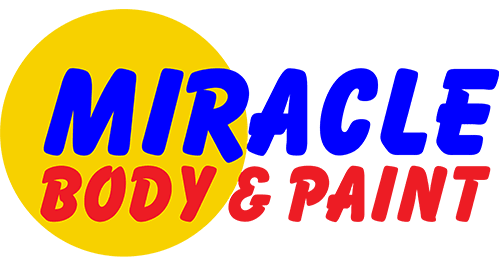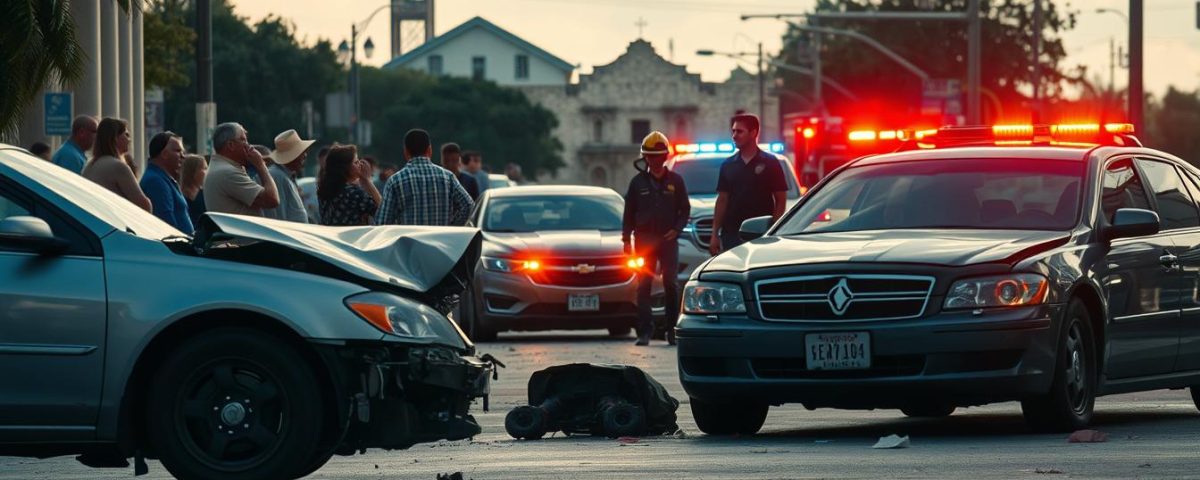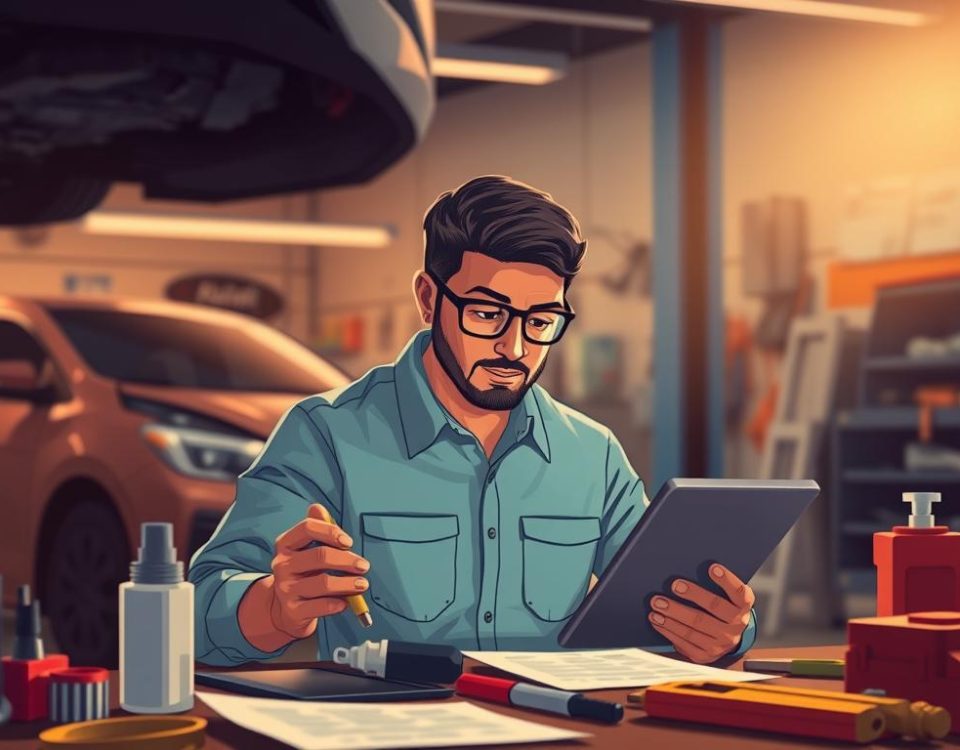
Step-by-Step Look at the Collision Repair Process

Why Choosing a Certified Auto Body Shop Matters
Stay safe first. In the first minutes after an accident, your actions shape medical care, evidence, and how smoothly a claim moves forward. Keep calm, move to a safe spot if you can, and check everyone for injuries.
Documenting the scene matters. Use your phone to take wide shots and close-ups of vehicle damage, road conditions, and any dashboard indicators. Collect names, addresses, driver’s license numbers, license plates, and VINs to preserve key information for your insurer.
Notify your agent or insurance company promptly so a representative can start the process. An official police report adds weight to your file, and a claim representative should contact you within a reasonable time — often up to 15 days in some cases.
Use a practical post-accident checklist to avoid costly mistakes and protect your rights. If your vehicle needs repair, you can count on Miracle Body and Paint Collision Center in San Antonio for expert collision repair and helpful guidance through the claims and repair timeline.
Key Takeaways
- Prioritize safety, then document the scene with photos and notes.
- Gather names, license info, plates, and VINs to support your claim.
- Notify your insurance right away so a representative can assist.
- Get an official police report to strengthen evidence for insurers.
- Keep receipts, towing records, and claim numbers in one place.
- Choose a trusted collision center to help streamline repairs and communication.
Stay safe first: assess injuries, call 911, and move vehicles out of traffic
Stop, check for injuries, and call 911 if anyone needs urgent care. Make sure you remain calm so you can think clearly and help others.
If a car is drivable, move it out of traffic to the shoulder or a parking area while staying at the scene. Turn on hazard lights and set out reflective triangles or flares to warn oncoming traffic.
- Assess yourself and passengers for injuries, then call 911 when medical help is needed.
- Keep conversations short and factual; do not admit fault at the scene.
- If conditions are dangerous, stay inside with seatbelts fastened until help arrives.
- Document where vehicles rested with quick photos before moving them, if safe to do so.
Check children, elderly passengers, and pets, and make sure they are away from moving traffic. After emergency responders are en route and the vehicles are secure, note details you will need for the police report and your insurer.
| Action | Why it matters | When to do it |
|---|---|---|
| Call 911 | Ensures prompt medical care and an official response | Immediately for any injuries |
| Move drivable vehicles | Reduces risk of a secondary crash and eases traffic flow | When safe and still at the scene |
| Warn oncoming traffic | Protects everyone at the site | Immediately after securing people |
After you are safe, Miracle Body and Paint Collision Center can guide you through next steps toward quality repairs in San Antonio. For more guidance on how to handle the moments after an accident, see smart moves after an auto collision.
Call the police and secure an official police report
Call police right away so an objective record documents the scene and protects your claim. Wait for officers on-site when you can. An officer’s presence creates an official record that insurers and repair shops rely on after an accident.
What officers need from you: driver’s license, insurance information, and a factual account
Be prepared and stay calm. Hand over your driver license and your insurance card when asked. Give a clear, factual statement—avoid guessing or assigning blame.
- Provide contact details and the exact information from your license and policy.
- Ask officers for their names, badge numbers, and the case number.
- If no officers respond, contact dispatch for instructions and learn how to file a written report later at the precinct.
How a police report supports your claim with insurance companies
A police report records location, parties involved, damage, and any citations. That report strengthens your file when you report the accident to your insurer.
Photograph the case number on any exchange form and request a copy or online access date. Provide the same account to your insurance company to keep records consistent.
When you’re ready to repair your vehicle, Miracle Body and Paint Collision Center can coordinate with your insurer using the police report details to help streamline repair authorization. Learn more about how a police report impacts repairs here.
Exchange information driver-to-driver and capture the scene accident details
Exchange clear contact details with the other driver before you leave the scene to avoid delays later. Get accurate information for every person involved and keep notes you can use when you call your insurer.
Be polite and methodical. Ask for full names, phone numbers, addresses, and insurance information. Verify spelling and numbers out loud so entries are correct.
What to collect from other drivers
- Full name, phone, and address plus the insurance company and policy details to support a clean claim submission.
- Ask to see and record the driver license, license plate, and VIN; confirm each number and spelling to avoid delays.
- Photograph both cars and the wider scene to capture lane markings, signs, and traffic controls that show how the accident unfolded.
- Request witness names and a mobile number, and note a short statement of what they saw to strengthen your evidence.
- If property was hit and the owner isn’t present, leave a written note with your name and number so they can reach you.
Tip: Miracle Body and Paint Collision Center can use your photos and exchanged information to help with estimates and insurer communications when you’re ready for repairs. Double-check your number and theirs before you leave so follow-up is fast.
Document evidence: take pictures, record damage, and note conditions
Begin photographing the scene immediately to preserve vital visual evidence. Take pictures of the overall scene first, then move in for close-ups of damage and any injuries while it’s safe to do so.
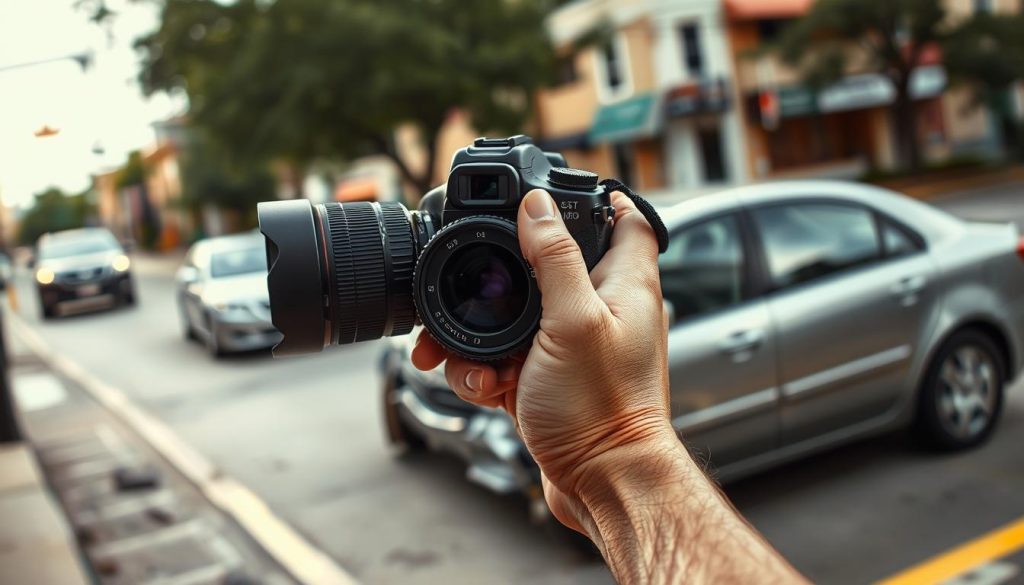
Documenting both visible and hidden harm helps your insurer and repair shop understand the full scope of the accident. Photograph skid marks, traffic signs, deployed airbags, dashboard warnings, and odometer readings. Date-stamp or note the time when possible.
- Take pictures from multiple angles: wide scene shots and tight images of bumpers, panels, glass, and underbody areas where damage can hide.
- Photograph injuries quickly—bruises and cuts change—then keep a daily journal of pain, meds, and missed activities to track how the crash affects you.
- Save receipts for towing, rides, and supplies; back up photos and video to the cloud and share a folder with your insurer and repair shop.
Bring your photos and notes to Miracle Body and Paint Collision Center for a thorough estimate. The shop can use your evidence to identify visible and hidden damage and help communicate findings to your insurer.
| Item | What to capture | Why it matters |
|---|---|---|
| Vehicle angles | Wide shots and close-ups of panels, bumper, underbody | Shows all visible and hidden damage for estimates |
| Scene details | Skid marks, signs, signals, road debris | Provides context for how the accident occurred |
| Injuries & vehicle status | Bruises, cuts, airbags, dashboard lights, odometer | Documents physical harm and immediate car condition |
| Follow-up records | Receipts, journal entries, video walk-arounds | Supports claims, reimbursement, and supplemental repairs |
Post-accident checklist to start your insurance claim the right way
Open a claim with your insurer as soon as it’s safe; a claim number keeps every step organized. Contact your insurance company to report date, time, location, parties involved, injuries, and photo links so the provider can begin the investigation quickly.
Expect the claims process to ask for specifics. A claims representative may request a recorded statement, repair estimates, and proof of loss. Keep copies of everything and note the company contact, claim number, and expected time frames—some insurers contact you within about 15 days.
What claims representatives may request
- Recorded statements and a clear account of events.
- Initial repair estimates and photos; adjusters or appraisers write estimates and may reinspect supplemental damage.
- Proof of loss documents and receipts for towing or emergency services.
Understanding coverage, deductibles, and costs
Ask your insurance company about coverage limits, deductibles, rental reimbursement, and whether companies pay repair cost or Actual Cash Value (ACV).
Work with your repair provider. Miracle Body and Paint Collision Center coordinates estimates and supplemental approvals with your insurer so repairs are done right the first time. Confirm communication preferences and whether a direct-repair program affects your choice of shop.
Protect your case: what to avoid after a crash
How you act in the hours after an accident can shape your insurance outcome and legal options.
Stay calm and keep your comments brief. Do not argue with other drivers or passersby. Heated language can be misread and later hurt your claim.
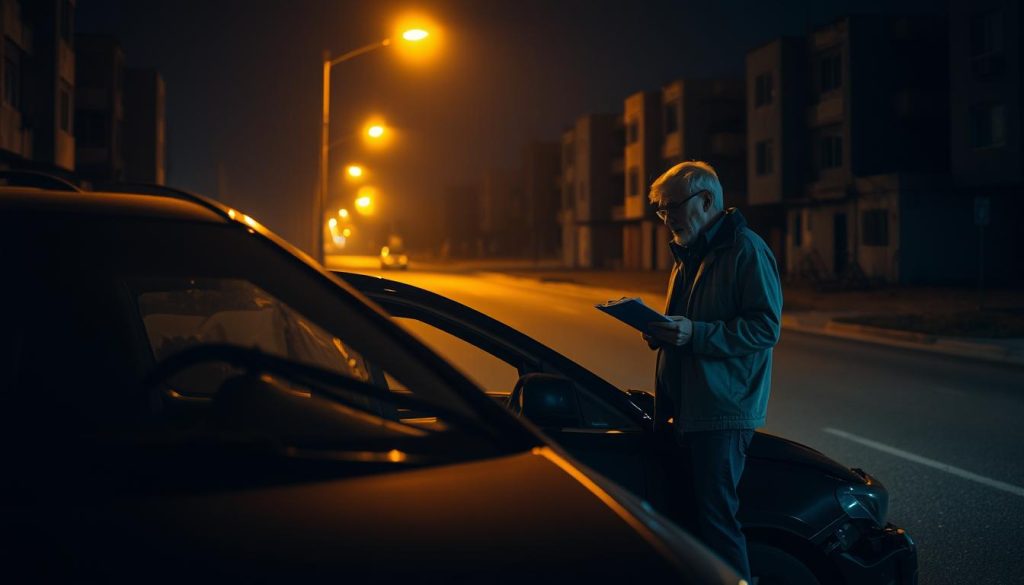
Actions to avoid and why they matter
- Do not sign any form that accepts fault or promises payment. Such statements can limit coverage and complicate subrogation.
- Avoid posting about the accident or injuries on social media while your claim is open. Insurers may use those posts to challenge your account.
- Keep your account consistent. Give facts to police and your insurer, and don’t speculate about fault until evidence is reviewed.
- If pressured to settle on the spot, politely decline and state you will proceed through insurance channels.
- Delay nothing related to medical care; gaps in treatment can be used to argue your injuries are unrelated.
Document and centralize everything — photos, estimates, medical forms, and notes about who you spoke with and when. This saves you time and keeps your response accurate.
If you have legal concerns, consider consulting an attorney for guidance. Meanwhile, Miracle Body and Paint Collision Center can help gather documentation and liaise with your insurer so you can focus on restoring your vehicle.
| What to avoid | Risk | What to do instead |
|---|---|---|
| Arguing at the scene | Can be seen as admission or provoke false statements | Give calm, factual statements to police only |
| Signing fault acknowledgments | May void coverage or complicate claims | Decline to sign; share facts with your insurer |
| Posting details online | Insurers can use posts against you | Keep social media private until claim closes |
| Giving recorded statements to other insurer | May be used to limit or deny claim | Talk to your insurer first; consult an attorney if unsure |
Your rights and next steps in the claims and repair process
Knowing how appraisals, supplements, and subrogation work helps you avoid surprises later.
Expect an appraisal by an insurer or an independent company. An adjuster writes a written estimate from visible damages and may request teardown to find hidden issues. If new damage appears, your chosen repair shop will submit supplemental documentation and the insurer may re-inspect before approving added work.
What to expect from value and recovery
Many insurance companies pay the lesser of repair costs or Actual Cash Value (ACV) if your vehicle is totaled. Subrogation allows your insurer to pursue the at-fault company to recover what it paid on your claim. If subrogation succeeds, your deductible can be reimbursed.
- Ask your insurer whether they will pursue subrogation and the expected time for deductible recovery.
- You choose the repair shop. Confirm warranties, certifications, and whether OEM parts fit your coverage.
- Keep evidence organized. Photos, estimates, and receipts help resolve appraisal differences quickly.
| Step | What happens | Why it matters |
|---|---|---|
| Appraisal | Adjuster inspects and issues estimate | Sets initial repair authorization and timeframes |
| Supplemental damage | Shop documents new findings; insurer may re-inspect | Prevents unpaid repairs and scope gaps |
| Subrogation | Insurer pursues at-fault company | Can return deductible and reduce your out-of-pocket costs |
| Parts decision | OEM vs. aftermarket discussed with shop and insurer | Balances safety, cost, and policy limits |
You have the right to choose Miracle Body and Paint Collision Center for repairs. We help with appraisals, supplemental approvals, subrogation updates, and questions about OEM vs. aftermarket parts so you can get back on the road with confidence.
Choose a trusted San Antonio collision center to repair your vehicle
When repair time comes, choose a collision center that handles estimates, insurer communication, and safe repairs for your car.
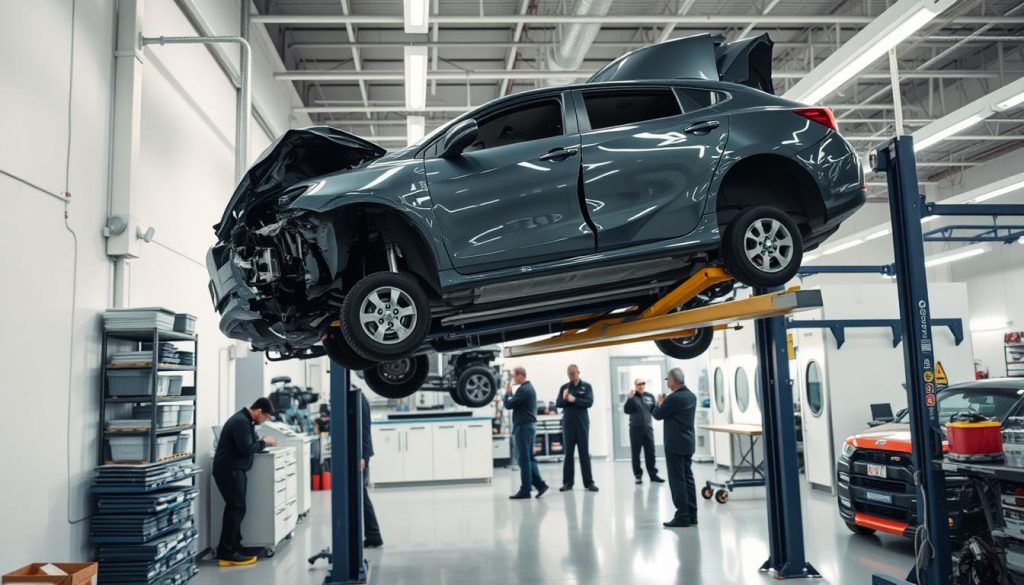
Why Miracle Body and Paint Collision Center is your local, insured-claims savvy partner
Pick a provider that works directly with your insurance company so you avoid delays and surprises. A qualified adjuster inspects damage and writes the initial estimate. Our team coordinates supplemental approvals and keeps your insurer updated on findings.
From estimates to claims assistance: make sure your vehicle is repaired right
Make sure line items match insurer guidelines and that repairs follow manufacturer methods. We review parts options and help you decide between OEM or approved alternatives based on your policy.
- Choose a collision specialist with experience working with your insurance company to speed approvals.
- Miracle Body and Paint offers comprehensive auto collision services and coordinates documentation for your claim.
- We assist with supplemental inspections, recalibration, and final detailing so your vehicle is safe and finished right.
| Location | Phone | Address |
|---|---|---|
| North West San Antonio – Leon Valley | (210) 680-1987 | 6217 Grissom Rd., San Antonio, TX 78238 |
| North East San Antonio | (210) 858-3630 | 4650 Walzem Rd, San Antonio, TX 78218 |
Hire Miracle Body and Paint Collision Center to repair your vehicle the right way and coordinate smoothly with your insurance company from start to finish. Review paperwork carefully and ask questions—our team will walk you through estimates so you authorize repairs with confidence.
Conclusion
Start by documenting who was involved, what happened, and where — it saves time when you contact insurers. Gather driver licenses, insurance cards, plates, and VINs, and photograph vehicles, traffic signs, and injuries from multiple angles.
Get witness names and numbers and write a brief account of the sequence of events and how the crash affects your daily life. An official police report plus clear photos strengthens your file with the insurance company and speeds repair approvals.
After you notify your insurer and collect records, review all paperwork before authorizing repairs. Insurers may list the repair facility as a payee on drafts, so make sure you understand your coverage, deductibles, and timelines from your company.
Choose Miracle Body and Paint Collision Center to coordinate estimates, insurance communication, and quality auto collision repair. Two locations to serve you:
North West San Antonio – Leon Valley: (210) 680-1987, 6217 Grissom Rd., San Antonio, TX 78238.
North East San Antonio: (210) 858-3630, 4650 Walzem Rd, San Antonio, TX 78218.
Call now to schedule your inspection and repair. We’ll guide you through your company’s process and keep you informed every step of the time it takes to restore your vehicle.

